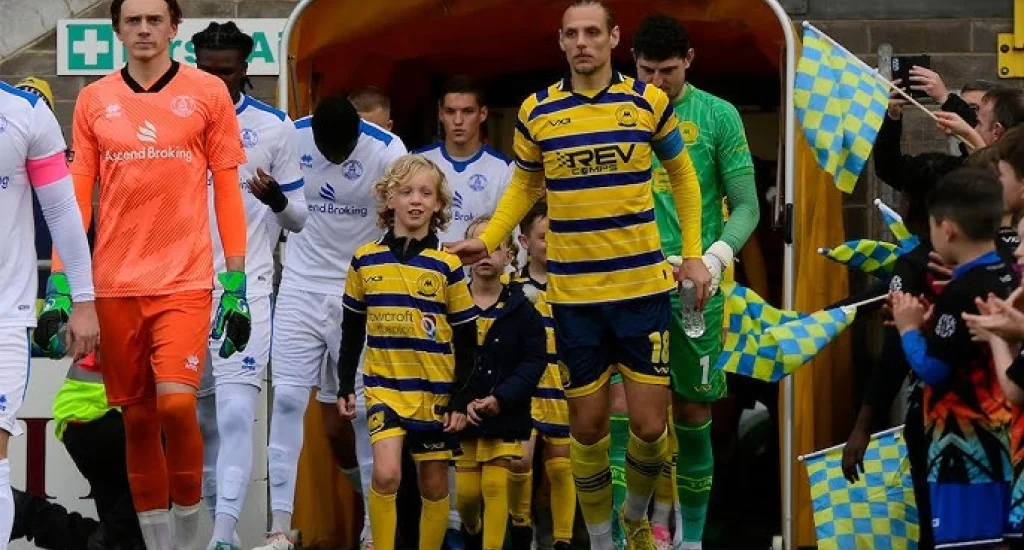
The trending video of a girl going viral
As non-consensual intimate images devastate lives, new laws and support systems offer hope—but the battle for digital dignity is far from over
On a Wednesday morning in November 2025, Maria—not her real name—woke to 47 missed calls. By the time she checked her phone, her most intimate moments had been viewed thousands of times across multiple platforms. She hadn't consented to any of it. And in the minutes it took for her world to collapse, she became one of millions navigating a form of violation that exists at the brutal intersection of technology, misogyny, and privacy law.
Her story isn't unique. One in ten women under the age of 30 have experienced either threats to share or the actual sharing of intimate personal photos without their consent. But in 2025, something has changed. The legal landscape has finally caught up to the technology. The support systems have improved. And survivors are finding their voices.
This is not a story about viral content. This is a story about what happens when privacy dies—and how we're learning to fight back.
Understanding the Violation
The terminology matters. What popular culture dismissively calls "revenge porn" is more accurately described as non-consensual intimate image abuse (NCII) or image-based sexual abuse. The term "revenge porn" inappropriately places blame on the victim instead of the offender, and erases situations where perpetrators are motivated by financial gain, social status, or simply fail to consider the devastating consequences of their actions.
The violation occurs when private, sexually explicit images or videos are distributed without consent. This includes images originally obtained without permission—through hacking, hidden cameras, or recording assaults—as well as images that were consensually created within relationships but later distributed without authorization.
"When someone's intimate images are shared without their permission it can be devastating. Often victims are afraid of retribution so they are reluctant to report the content themselves or are unaware the content has been shared." — Meta's Safety Center, 2019
The impact extends far beyond embarrassment. Victims experience workplace discrimination, cyberstalking, physical attacks, and what researchers call "digital kidnapping"—the sense that your privacy has been stolen and you can never get it back. Some lose jobs and become effectively unemployable when companies conduct internet searches for potential sources of bad publicity.
In an era where families are already fighting against manufactured crises, adding the trauma of privacy violation creates compounding devastation that affects every aspect of a person's life.
The Legal Awakening of 2025
For years, victims had nowhere to turn. Existing laws didn't contemplate digital violations. Police departments didn't understand the harm. Tech platforms treated removal requests as optional. But 2025 represents a watershed moment.
In May 2025, South Carolina became the last state to criminalize non-consensual distribution of intimate images, meaning all 50 states now have criminal laws around NCII. This milestone represents years of tireless work by survivors and advocates, particularly organizations like the Cyber Civil Rights Initiative and MyOwn Image.
At the federal level, the TAKE IT DOWN Act was signed into law in May 2025, making it a federal crime to knowingly share or threaten to share intimate images, including AI-generated deepfakes depicting real people. The law requires platforms to remove such material within 48 hours of notice from a victim and make reasonable efforts to identify and remove identical copies.
This matters because the technology to violate privacy has advanced faster than our ability to protect it. Deepfakes—sexually explicit digital forgeries created using machine learning—can make it appear that someone is nude or engaged in sexual conduct when no such images ever existed. The person violated may have never taken an intimate photo in their life.

The Violence Against Women Reauthorization Act of 2022 (VAWA 2022) created a federal civil cause of action for individuals whose intimate images are disclosed without consent, allowing victims to recover damages and legal fees. Combined with state-level protections, survivors now have multiple legal pathways to pursue justice.
The Support Infrastructure
Legal rights mean nothing without practical support. Recognizing this, organizations worldwide have built comprehensive victim assistance networks.
StopNCII.org, launched by the Revenge Porn Helpline in 2015, has supported thousands of victims and successfully removed over 300,000 individual non-consensual intimate images from the internet with an over 90% removal rate. The platform uses innovative technology that allows victims to take action without re-traumatizing themselves.
The tool works by creating digital fingerprints (called hashes) of intimate images directly on a victim's device. Only the hash is shared with StopNCII.org and participating companies—the actual image never leaves the victim's control. This allows platforms like Facebook, Instagram, and others to proactively detect and block the images before they spread further.
The Cyber Civil Rights Initiative operates a 24/7 National Helpline at 844-878-CCRI, providing telephone support and advice for victims affected by non-consensual pornography. Trained crisis counselors understand the specific trauma of digital violation and can guide victims through the immediate steps needed to protect themselves.
Other critical resources include:
- National Domestic Violence Hotline (800-799-7233): 24/7 support for victims where intimate image abuse occurs within domestic violence contexts
- Love is Respect (866-331-9474): 24/7 chat, call, and text peer support for young people concerned about dating relationships
- Without My Consent: Educational materials and legal resources to fight online harassment
- Revenge Porn Helpline (UK): Free, confidential advice and support, operating 10 AM-4 PM Monday-Friday
These aren't abstract services—they're lifelines for people in crisis. Much like how communities rally around those facing tragedy, these organizations provide the immediate support victims need to begin rebuilding.
The Platform Response
Social media companies, once indifferent to non-consensual content, have been forced to evolve. In 2019, Meta announced proactive detection technology using machine learning and artificial intelligence to identify near-nude images or videos shared without permission on Facebook and Instagram before anyone reports them.
The technology goes beyond simple nudity detection. It analyzes context, patterns, and metadata to distinguish between consensual adult content and intimate images being weaponized against someone. When violations are detected, the content is immediately removed and the account responsible faces consequences.
Meta also launched "Not Without My Consent," a victim-support hub developed with experts that provides resources, reporting mechanisms, and access to pilot programs designed to prevent re-sharing. The initiative partners with organizations worldwide, including the Revenge Porn Helpline, Cyber Civil Rights Initiative, Digital Rights Foundation, SaferNet, and academic researchers.
Other platforms have implemented similar systems, though effectiveness varies. YouTube, Twitter, TikTok, and Reddit all have reporting mechanisms for non-consensual intimate content, though response times and thoroughness differ significantly.
The Privacy Violations of 2025
While laws have improved, violations continue. In May 2025, Google agreed to pay $1.38 billion over privacy violations, including accusations of collecting biometric information like voice prints and facial geometry without adequate disclosure or consent.
The settlement underscores a broader truth: even major tech companies with vast resources struggle to protect user privacy. If Google can't consistently safeguard data, individual users face even greater vulnerability.
In September 2025, a U.S. federal jury ruled that Google had illegally tracked users even after they turned off their "Web & App Activity" settings, affecting around 98 million users across nearly 174 million devices. The $425 million damages award sent a clear message: companies must respect user privacy settings and be transparent about data collection.
These corporate violations create the infrastructure for individual abuse. When platforms normalize invasive data collection, they make it easier for individuals to rationalize privacy violations. When companies fail to secure user data, they create vulnerabilities that abusers exploit.
What To Do If It Happens To You
If your intimate images have been shared without consent, immediate action matters. Here's what experts recommend:
1. Document Everything
Before removing anything, take screenshots showing the content, where it was posted, who posted it (if known), dates, times, and any threatening messages. This documentation serves as digital evidence for law enforcement, restraining orders, and potential legal action. Save everything to a secure location—both cloud storage and physical drives.
2. Contact Support Organizations
You don't have to navigate this alone. Call the Cyber Civil Rights Initiative Helpline (844-878-CCRI) or contact the Revenge Porn Helpline. These organizations have walked thousands of people through this process and can provide both emotional support and practical guidance tailored to your specific situation.
3. Use StopNCII.org
Create a case on StopNCII.org to generate hashes of your images. This allows participating platforms to proactively block the content without requiring you to repeatedly view or share the images yourself. The service is free and designed to protect your privacy throughout the process.
4. Report to Platforms
Every major platform has reporting mechanisms for non-consensual intimate content. Report the violation on each platform where the content appears. Be persistent—initial responses may be inadequate, but escalating through support channels often produces results.
Facebook, Instagram, Twitter, TikTok, Reddit, and YouTube all have specific policies against non-consensual intimate imagery. Under the TAKE IT DOWN Act, platforms must remove reported content within 48 hours.
5. Consider Legal Action
Consult with an attorney specializing in cyber sexual abuse. Many offer free initial consultations and work on contingency (meaning they only get paid if you recover damages). You may have claims under federal law (VAWA 2022, TAKE IT DOWN Act) and state law (all 50 states now criminalize this behavior).
In many jurisdictions, you can pursue both criminal charges and civil damages. Criminal cases can result in jail time for perpetrators; civil cases can result in financial compensation for you.
6. Protect Your Copyright
If you took the photos or videos yourself, you own the copyright. Register your images with the U.S. Copyright Office (copyright.gov/registration). This gives you additional legal authority to demand removal based on copyright infringement—a powerful tool that often motivates faster platform response.
7. Address Search Engine Results
Even after content is removed from platforms, it may still appear in search engine results. Google, Bing, and other search engines have processes for removing links to non-consensual intimate imagery. Submit removal requests through their respective reporting mechanisms.
When Private Moments Go Viral: The Speed of Digital Destruction
The cruelty of modern technology lies in its speed. A private moment can become global in minutes. What took hours to distribute in the pre-internet era now takes seconds. By the time a victim realizes what's happening, thousands may have already seen their most intimate moments.
This viral velocity creates unique trauma. Traditional privacy violations were contained—a limited number of people saw or knew. But when something goes viral, the violation becomes infinite and permanent. You don't know who's seen it. You can't control where it spreads. Every platform becomes a potential host for your worst nightmare.
The psychological impact compounds with each share, each view, each comment. Victims describe feeling like they're being assaulted repeatedly, in public, with no way to make it stop. The viral nature transforms a single violation into thousands of micro-violations that continue indefinitely.
This is why immediate action matters. The first hours after content surfaces are critical. Every minute content remains accessible, it spreads further. Every platform it reaches makes removal more complicated. The viral machine doesn't pause for your trauma—it accelerates through it.
The Real Cost of Viral Videos: Beyond Embarrassment
Society trivializes digital privacy violations with language like "leaked" or "scandal," as if the primary harm is embarrassment. The real costs are far more severe and far-reaching:
Economic Devastation: Victims lose jobs, get denied employment, lose professional opportunities. Employers Google candidates—when intimate images appear in search results, job offers disappear. Some victims become effectively unemployable in their chosen fields. The economic consequences can last decades.
Physical Safety Threats: Non-consensual image sharing often escalates to stalking, harassment, and physical violence. When your intimate images are public, predators know you're vulnerable. Many victims must relocate, change their names, or live in constant fear of recognition.
Relationship Destruction: Family relationships shatter. Romantic relationships end. Friendships dissolve. Some victims face rejection from religious communities or cultural groups. The isolation compounds the trauma—precisely when you need support most, your support network may abandon you.
Mental Health Crisis: Depression, anxiety, PTSD, and suicidal ideation are common among victims. The constant awareness that your privacy has been violated—that strangers have seen you in your most vulnerable moments—creates persistent psychological distress. Many require years of therapy to process the trauma.
Educational Disruption: Students drop out of school. Others endure bullying so severe that learning becomes impossible. Academic futures are derailed not by any failure of the victim, but by others' reactions to the violation they've experienced.
These aren't theoretical costs—they're documented realities affecting millions of people. When we treat viral privacy violations as entertainment or gossip, we participate in the destruction of real lives.
The Broader Context of Digital Privacy
Non-consensual intimate image abuse doesn't exist in isolation. It's part of a broader ecosystem of digital privacy violations that intensified throughout 2025.
Federal courts saw over 1,970 data privacy lawsuits in 2024 alone, with numbers continuing to climb in 2025. Many cases involve challenges to website technologies that impermissibly access consumer data, creating the infrastructure that enables more targeted abuses.
Data brokers faced unprecedented scrutiny in 2025. The FTC settled with two companies over allegations that they collected, retained, and sold consumers' precise location data associated with sensitive locations without adequately verifying consent. Texas sent violation notices to companies failing to register as data brokers, while California's Privacy Protection Agency issued enforcement actions for similar failures.
These corporate violations create vulnerabilities that abusers exploit. When your location data is sold without consent, stalkers can track you. When your biometric data is collected without disclosure, it can be used to verify deepfakes. When your browsing history is monetized, it can be weaponized.
The fight for digital privacy protection parallels other social justice movements. Just as media figures are reshaping their industries by prioritizing substance over sensationalism, privacy advocates are reshaping legal frameworks to prioritize human dignity over corporate profit.
The Psychological Toll
Behind every statistic is a person whose life has been upended. Victims of non-consensual intimate image abuse experience rates of depression, anxiety, and PTSD comparable to victims of sexual assault. Many describe feeling like their privacy has been stolen permanently—that no matter what they do, those images exist somewhere, seen by someone.
The violation is compounded by victim-blaming. "Why did you take those photos?" "Why did you trust that person?" These questions shift responsibility from perpetrator to victim, implying that consensually creating intimate images somehow justifies their non-consensual distribution.
This is fundamentally wrong. Consenting to create an image is not consenting to its distribution. Trusting someone with your privacy is not permission for them to violate it. Taking an intimate photo is not an invitation for the world to see it.
"The sharing of non-consensual intimate images can have devastating effects on victims and survivors. When images are shared online without consent, many victims feel ashamed, fear, guilt, and the actions of sharing can lead to real-world implications and dangers." — National Center for Victims of Crime
Professional support is critical. Many victims benefit from trauma-focused therapy with clinicians who understand the specific challenges of digital violation. Support groups—both in-person and online—provide community with others who genuinely understand what you're experiencing.
Understanding Consent in the Social Media Age
The digital era has fundamentally complicated consent in ways previous generations never had to navigate. A photograph that once lived in a shoebox now lives forever on servers worldwide. A moment of intimacy captured digitally can be weaponized instantly.
Consent in 2025 must be understood as layered and context-specific:
Consent to create ≠ Consent to keep: Agreeing to be photographed doesn't mean agreeing those images can be retained indefinitely. You have the right to request deletion.
Consent to keep ≠ Consent to share: Even if someone can keep an image, that doesn't give them permission to show others. Private remains private unless explicitly changed.
Consent to share with one ≠ Consent to share with many: Sharing an image with a trusted friend or partner is not permission for them to share it further. Each new audience requires new consent.
Consent to one platform ≠ Consent to all platforms: Posting something on a private social media account is not consent for it to be screenshot and shared elsewhere.
Past consent ≠ Future consent: Consent can be withdrawn. What you agreed to yesterday you can revoke today. Relationships end—and consent within those relationships ends too.
Consent under pressure ≠ Real consent: Agreeing to something because you fear the consequences of refusing is not genuine consent. Coerced consent is not consent.
These distinctions matter because many perpetrators claim they had "permission." They argue that because images were originally consensual, they can do whatever they want with them. This is fundamentally wrong—and in all 50 states in 2025, it's also illegal.
The social media age requires us to extend our understanding of consent beyond the physical world into the digital realm. Your body is yours—and so are its digital representations. No one has the right to distribute images of your body without your explicit, ongoing permission.
How to Help When Someone's Privacy Is Violated Online
If someone you know is experiencing non-consensual intimate image abuse, your response matters enormously. Here's how to help:
1. Believe Them Immediately
Don't question whether it "really" happened or whether they "should have known better." Victim-blaming, even unintentional, compounds trauma. Your first response should be: "I believe you. This is not your fault. How can I help?"
2. Don't View or Share the Content
If someone tells you about non-consensual images, don't search for them out of curiosity. Don't look at them if sent. Don't share them with others "to see if they're real." Every view re-victimizes the person. Every share makes removal harder.
3. Offer Practical Support
Help them document evidence, navigate reporting processes, contact support organizations. Offer to sit with them during difficult phone calls. Help research attorneys. Drive them to appointments. Practical support relieves some of the overwhelming burden of dealing with this alone.
4. Provide Emotional Support Without Judgment
Listen without offering unsolicited advice. Don't minimize their experience with phrases like "it will blow over" or "people will forget." Acknowledge the real harm they're experiencing. Let them process their emotions without rushing them toward "moving on."
5. Respect Their Privacy and Choices
Don't tell others about what happened without permission. Don't pressure them to report to police if they're not ready. Don't insist they pursue legal action if they don't want to. Respect that they get to control their own response to a situation where their control was violated.
6. Help Counter Victim-Blaming
If you hear others blaming the victim—"why did they take those photos?"—intervene. Politely but firmly explain that creating intimate images is not permission for their distribution. Shift the conversation from what the victim did to what the perpetrator did.
7. Support Their Long-Term Recovery
This isn't something people "get over" quickly. Offer sustained support—checking in weeks and months later, not just in the immediate crisis. Understand that triggers and bad days will continue long after the initial violation.
8. Connect Them with Professional Resources
Gently suggest therapy with trauma-informed clinicians. Share information about support organizations like the Cyber Civil Rights Initiative. Offer to help them access these resources without being pushy about it.
9. Help Protect Their Safety
If they're afraid of the perpetrator, help them develop safety plans. This might include changing locks, varying routines, documenting threats, pursuing restraining orders. Take safety concerns seriously even if they seem paranoid—stalking often escalates after intimate image abuse.
10. Take Care of Yourself Too
Supporting someone through trauma is emotionally demanding. Set boundaries around what you can sustainably offer. Seek your own support if needed. You can't help effectively if you're completely depleted.
Remember: Your role isn't to fix this for them—it's to stand with them while they navigate it. The violation took away their control; good support helps them reclaim it.
Digital Consent and Privacy: What Everyone Needs to Know in 2025
Prevention requires education. Whether you're a parent, educator, friend, or simply someone navigating digital spaces, understanding these principles protects both yourself and others:
For Creating Content:
- Understand that digital content is nearly impossible to fully delete once shared
- Be extremely cautious about who you trust with intimate images—the majority of violations come from current or former partners
- Consider whether you need intimate digital content at all—physical-only options eliminate digital risk
- Use encrypted storage if you do create intimate content
- Know that having intimate images doesn't make you "stupid" or "asking for it"—creation is not consent to distribution
For Receiving Content:
- Treat intimate images shared with you as sacred trust, not property
- Understand that you have zero right to share, show, or distribute images someone shared privately with you
- Delete images when relationships end or when asked—keeping them without consent is a violation
- Never use intimate images as leverage, threats, or "insurance"
- If someone shares someone else's intimate images with you, refuse to look and tell them what they're doing is wrong
For Witnessing Violations:
- Don't view non-consensual intimate content—curiosity is not justification
- Report it immediately to platforms and, if appropriate, law enforcement
- Don't share or screenshot it "as evidence"—let victims and authorities handle documentation
- Don't discuss the content publicly or gossip about the victim
- Offer support to victims if you know them, and counter victim-blaming when you hear it
For Parents and Educators:
- Start conversations about digital consent early, before children have smartphones
- Explain that what they do online has real-world consequences that last forever
- Teach them that they have the right to refuse to create intimate content, even if a partner pressures them
- Make sure they know they can come to you if something goes wrong—without fear of punishment
- Model good digital citizenship yourself—children learn from watching adults
For Everyone:
- Recognize that privacy is a fundamental human right, including sexual privacy
- Understand that consent is specific, informed, freely given, and revocable
- Learn about the laws in your state protecting victims—knowledge empowers both prevention and response
- Challenge cultural attitudes that blame victims rather than perpetrators
- Support organizations working to protect digital privacy and assist victims
Digital consent isn't complicated—it's just different from what previous generations experienced. The core principle remains simple: respect people's autonomy over their own bodies and images of their bodies. Everything else flows from that.
Prevention and Protection
While no one should have to protect themselves against violations that should never occur, practical steps can reduce vulnerability:
- Understand your rights: Know that all 50 states criminalize non-consensual distribution of intimate images. You have legal recourse.
- Be cautious about creating images: This isn't victim-blaming—it's practical risk reduction. If images don't exist, they can't be weaponized. But if you choose to create them, that's your right.
- Control access: Store intimate images in encrypted, password-protected locations. Don't store them in cloud services without understanding their security protocols.
- Trust carefully: The majority of non-consensual image abuse comes from current or former intimate partners. Unfortunately, trust can be misplaced.
- Use technology wisely: Apps like Signal offer disappearing messages. Some platforms allow you to send images that can't be screenshotted (though workarounds exist).
- Act preventatively: If you're concerned about existing images, use StopNCII.org proactively to create hashes before any violation occurs.
The Cultural Shift
Laws matter, but culture matters more. The reason all 50 states now criminalize non-consensual intimate image abuse isn't just legislative—it's cultural. Society has begun recognizing this violation for what it is: a form of sexual abuse that weaponizes technology.
This shift parallels other cultural reckonings. The #MeToo movement forced conversations about sexual harassment and assault that had been silenced for decades. The digital privacy movement is forcing similar conversations about technology-enabled abuse.
We're learning that consent isn't a one-time checkbox—it's an ongoing conversation that applies to every new context. Consenting to intimacy doesn't mean consenting to documentation. Consenting to documentation doesn't mean consenting to sharing. Consenting to sharing with one person doesn't mean consenting to sharing with the world.
Young people, in particular, are developing more sophisticated understandings of digital consent. They recognize that "permanent delete" doesn't exist online, that screenshots can capture disappearing messages, and that trust must be earned and maintained.
Looking Forward
November 2025 represents a turning point, not an ending. Legal protections exist, but enforcement varies. Support systems exist, but funding is inadequate. Technology solutions exist, but adoption is incomplete.
The path forward requires sustained effort across multiple fronts:
- Continued advocacy: Pressure platforms to implement stronger proactive detection and faster response times
- Better education: Teaching digital citizenship and consent in schools, starting young
- Increased funding: Support organizations helping victims need resources to scale their services
- Technology innovation: Developing better tools for detection, removal, and prevention
- Cultural change: Shifting norms so that sharing intimate images without consent becomes as socially unacceptable as it is legally prohibited
The fight against non-consensual intimate image abuse connects to broader struggles for dignity in digital spaces. When we protect people's intimate privacy, we're protecting their autonomy, their safety, and their fundamental humanity.
Similar to how trusted analysts build credibility through consistent truth-telling, the privacy protection movement builds strength through persistent advocacy for victims' rights and perpetrator accountability.
A Message for Victims
If this has happened to you, know this: It is not your fault. You did nothing wrong. Creating intimate images was your choice. Someone else violated your trust and your rights. That violation belongs to them, not to you.
You are not alone. Thousands of people have navigated this before you and thousands more will unfortunately face it in the future. Support systems exist. Legal protections exist. People who understand and believe you exist.
The road ahead may be difficult. Removal processes can be frustrating. Legal proceedings can be lengthy. The psychological toll can be crushing. But you can survive this. Many people have—and they've gone on to reclaim their lives, their privacy, and their power.
Reach out. Call the helplines. Use the tools. Find a therapist. Tell trusted friends. Report to law enforcement. Pursue legal action. Do whatever you need to do to feel safe and begin healing.
Your privacy was violated, but your dignity remains intact. No image can diminish your worth. No violation can define your future. You are more than what was done to you.
"One of the most devastating aspects of non-consensual intimate image abuse for victim-survivors is the constancy of the threat that your intimate images will be shared without your consent or knowledge. This initiative directly responds to these harms and provides a mechanism to prevent further distribution." — Asher Flynn, Associate Professor of Criminology, Monash University
Resources and Support
24/7 Helplines:
- Cyber Civil Rights Initiative: 844-878-CCRI (844-878-2274)
- National Domestic Violence Hotline: 800-799-7233
- Love is Respect: 866-331-9474 (call, text, or chat)
Online Resources:
- StopNCII.org - Free tool to prevent image sharing
- Cyber Civil Rights Initiative (cybercivilrights.org) - Legal information and support
- Without My Consent - Educational materials and state-by-state legal guides
- Revenge Porn Helpline (UK) - International support and image removal services
Legal Resources:
- C.A. Goldberg Law - Specializes in cyber sexual abuse cases
- Minc Law - Focuses on online reputation and privacy violations
- Local legal aid organizations - Many provide free consultations for victims
The fight for digital dignity continues. But in November 2025, victims have more tools, more legal protections, and more support than ever before. That's progress. It's not enough—but it's progress.
And for the person reading this because it happened to them, or because they fear it might, or because they're trying to understand: You matter. Your privacy matters. Your dignity matters. And there are people ready to help you protect all three.
Related Articles




